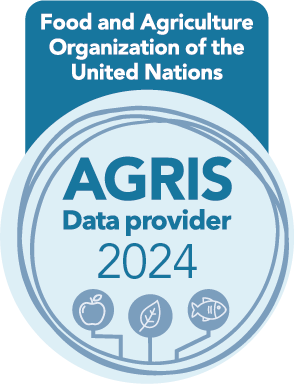Combined acoustic-mechanical analysis during storage of scallion (Allium fistulosum) minimally processed
DOI:
https://doi.org/10.17268/sci.agropecu.2012.02.02Keywords:
scallion, texture, crispness, storage.Abstract
Scallion (Allium fistulosum) is a highly perishable green vegetable due to its moisture content, its high metabolic rate and their poor conditions of post-harvest during to harvest and transport. The objective of this research was to determine the relationship between visual deterioration´s product and changes generated in the mechanical and acoustic properties of the same. The scallion grown in Aquitania, Boyacá Colombia was stored under different conditions of storing: vacuum packed (10 mbar) and unpacked (HR 68%) and storage temperature 4 ºC and 16 ºC until deterioration by visual appearance. The acoustic mechanical changes in firmness, crispness and fracture for unpacked scallion and stored at 4 °C occurred on day 15 of storage, and visual deterioration on day 13. For the unpacked product and stored at 16 °C, the biggest change was presented at sixth day. The vacuum packed product, stored at 4 °C presented mechanical, acoustic and visual appearances changes at 15 day and for the product packaged under vacuum and stored at 16 ° C showed changes on day six in the characteristics of firmness, crispness and fracturability, coinciding with the decrease in visual appearance. In general terms the change was more noticeable decrease in fracturability for scallion stored at 16 °C, in the two packaging conditions. Instrumental methods used to approximate the deterioration´s time of minimally processed scallion were adequate to establish shelf life perceived by visual appearance.
References
Costa, F.; Luca, C.; Longhi, S.; Guerra, W.; Magnago, P.; Porro, D.; Soukoulis, C.; Salvi, S.; Velasco, R.; Biasioli, F.; Gasperi, F. 2011. Assessment of apple (Malus × domestica Borkh.) fruit texture by a combined acoustic-mechanical profiling strategy Postharvest. Biology and Technology 61(1): 21-28.
Chauvin, M.A.; Younce, F.; Ross, C.; Swanson, B. 2008. Standard scales for crispiness, crackliness and crunchiness in dry and wet foods: relationship with acoustical determinations. Journal of food texture studies 39(4): 345-368.
Giese, J. 1995. Measuring Physical Properties of Food. Food Technology 49(2): 54-63.
Howard, L.R.; Yoo, K.S.; Pike, L.M.; Miller Jr, G.H. 1994. Quality changes in diced onions stored in film packages. Journal of Food Science 59(1): 110-112, 117.
Luyten, H.; Plijter, J.J.; Vliet, T.V. 2004. Crispy/crunchy crusts cellular solid foods: a literature review with discussion. J. Text. Stud. 35: 445–492.
MADR. (Ministerio de Agricultura y Desarrollo Rural). Corporación Colombia Internacional. 2010. Encuesta Nacional Agropecuaria.
Péneau, S. 2005. Freshness of fruits and vegetables: concept and perception. Doctoral dissertation No 16320. Institute of food Science and nutrition ETH. Zurich, Switerland.
Toivonen, P.; Brummell, M.A.; David, A. 2008. Biochemical bases of appearance and texture changes in fresh-cut fruit and vegetables. Postharvest Biology and Technology 48(1): 1-14.
Van, T.P. 2008. Prediction of Change in Quality of ‘Cripps Pink’ Apples During Storage. Faculty of Agriculture, Food and Natural Resources, The University of Sydney.
Varela, P.; Salvador, A.; Gámbaro, A.; Fiszman, S. 2008. Texture concepts for consumers: a better understanding of crispy-crunchy sensory perception. Eur Food Res Technology 226: 1081-1090.
* Autor para correspondencia.
E-mail: indira.sotelo@unisabana.edu.co (I. Sotelo).
Recibido 21 noviembre 2011.
Aceptado 17 abril 2012.
Downloads
Published
How to Cite
Issue
Section
License
The authors who publish in this journal accept the following conditions:
a. The authors retain the copyright and assign to the magazine the right of the first publication, with the work registered with the Creative Commons attribution license, which allows third parties to use the published information whenever they mention the authorship of the work and the First publication in this journal.
b. Authors may make other independent and additional contractual arrangements for non-exclusive distribution of the version of the article published in this journal (eg, include it in an institutional repository or publish it in a book) as long as it clearly indicates that the work Was first published in this journal.
c. Authors are encouraged to publish their work on the Internet (for example, on institutional or personal pages) before and during the review and publication process, as it can lead to productive exchanges and a greater and faster dissemination of work Published (see The Effect of Open Access).




